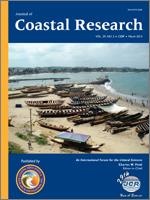Ari Güner, H.A.; Yüksel, Y., and Ç evik, E.Ö., 2013. Longshore sediment transport—field data and estimations using neural networks, numerical model, and empirical models.
This work suggests an alternative approach, namely, the use of an artificial neural network (ANN), for the estimation of longshore sediment transport (LST). The ANN technique provides a powerful utility for input–output mapping if there is sufficient data and can be useful for modeling processes about which adequate knowledge of physics is limited, such as sediment transport. A feed-forward network was developed to predict the LST from a variety of causative variables. The best network was selected after testing many alternatives. The network was validated by experimental and field data. In addition, the ANN method was applied to the case study area (Karaburun, Turkey), located on the SW coast of the Black Sea. The accuracy of the ANN predictions was evaluated against the measured LST rate at Karaburun and compared with two well-known empirical formulas (CERC formula, Kamphuis formula), and a numerical model (LITPACK). The average, net, annual LST rate for the study area was determined based on the morphological volume differences between the surveys. The volume differences were obtained from the accretion at the secondary breakwater of the harbor located at the western end of the 4-km sandy beach. The harbor acted as a total trap, and the beach surveys were extended to an adequate depth. The measured net LST rate was 72,000 m3/y, and the calculated rates were 370,000, 77,000, 83,000, 85,000, and 80,000 m3/y based on the CERC formula (Ksig = 0.39), the modified CERC formula (Ksig = 0.08), the Kamphuis formula, the LITPACK computer program, and the ANN. All methods employed in this study estimated the LST rates well, except the CERC formula. The CERC formula overestimated the LST rate by a factor of five; nevertheless, with the adjustment of the empirical Ksig value (0.39) to 0.08, the fit to the observed data improved significantly. The Kamphuis formula produced results similar to those predicted by the field data. This confirms the use of the Kamphuis formula in conditions of low-wave energy with breaker heights of less than 1 m, which correspond to the study area's wave condition.





